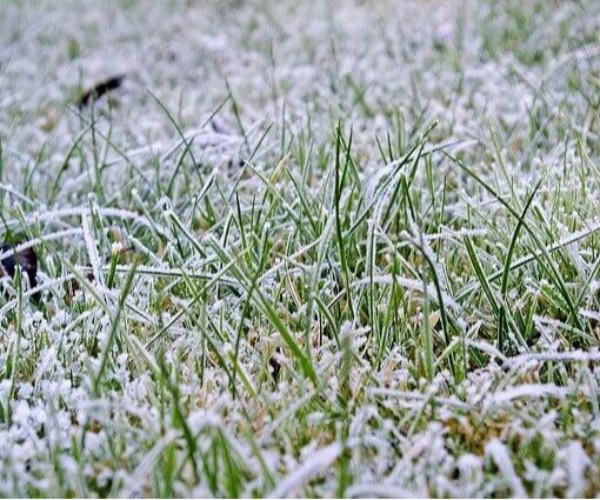- Lawn Turf
- Artificial
- Soil
- Timber
- Composite Decking
- Paving & Stone
Get In Touch With Our Experts Today!
Give us a Call! - Seed & Fertiliser
- Dressing
- Bark

November 17, 2023 Autumn Tips
When crisp, frosty mornings arrive in autumn and winter, your lawn may turn white and sparkly under a layer of frozen dew. Though picturesque, many homeowners see frost as a threat and worry it will damage the grass. However, light frosts can actually provide some benefits for lawns. When controlled, the effects of frost on grass are not always negative. Let’s examine how properly timed and tempered frosts can give your lawn a boost.
While harsh, repeated frosts can harm grass, occasional light frosts have some positive effects:
– Hardens growth – Gentle frosts help toughen and harden new growth, preparing the lawn for colder months.
– Deters pests – Frost kills off lawn pests, bugs, and lawn grubs that thrive in warm weather.
– Controls disease – The cold eliminates bacterial and fungal diseases like brown patch and dollar spot.
– Improves colour – Frost stimulates grass to produce more chlorophyll for a lusher, deeper green colour when it regrows.
– Boosts flavour – Icy temperatures increase sugars and carbohydrates in the grass, providing a sweet early spring feed for grazing cattle.
– Encourages dense growth – Frost followed by warmer days signals grass to kick back into growth, resulting in a thicker lawn.
– Improves soil structure – Frost causes clumps of soil to break up, creating a better environment for grass roots.
– Reduces thatch build-up – Thatch layers are naturally reduced as microbes in the soil remain active under frosts.
So you can see, occasional light winter frosts are not all bad news for your lawn. When kept under control, they offer several benefits. The key is managing frosts properly to avoid lawn damage while utilising the positive effects.

Follow these tips to get the most out of helpful frost while avoiding harm:
– Continue mowing in autumn to stop grass getting too long and susceptible before winter.
– Apply autumn feeds to strengthen growth before frosts but avoid high nitrogen.
– Aerate compacted areas so frost can penetrate and improve soil.
– Clear leaves to prevent frosted grass being smothered.
– Water moderately before forecast frosts to keep grass hydrated.
– Cover very sensitive spots with frost blankets to control exposure.
– As spring approaches, rake out any dead material and reseed patches for lush regrowth.
– Overseed the entire lawn to thicken it up after winter frosts.
– Gradually reduce mowing height as the lawn recovers.

While nobody wants severe winter frost damage on their lawn, the effects of lighter frosts should not be feared. In fact, they can be utilised to improve your grass and remove unwanted pests. A healthy lawn can tolerate short sharp frosts and even benefit from their positive impacts when properly managed.
So embrace Jack Frost this winter as a helpful ally rather than an enemy! With careful preparation and some post-frost TLC, your lawn will thrive under a controlled frost regime. Then you can look forward to an improved, lusher lawn emerging after winter. A sprinkling of sparkling white frost on autumn and winter mornings can be the sign of a lawn getting ready to put its best shoots forward when spring arrives!
If your lawn is looking especially tired or weak and in need of a change, then be sure to get in touch with George Davies Turf today and we can advise accordingly.
https://www.georgedaviesturf.co.uk/blog/how-to-prepare-your-lawn-for-winter
https://www.georgedaviesturf.co.uk/blog/can-i-put-topsoil-down-in-winter
https://www.georgedaviesturf.co.uk/blog/can-you-lay-turf-in-winter